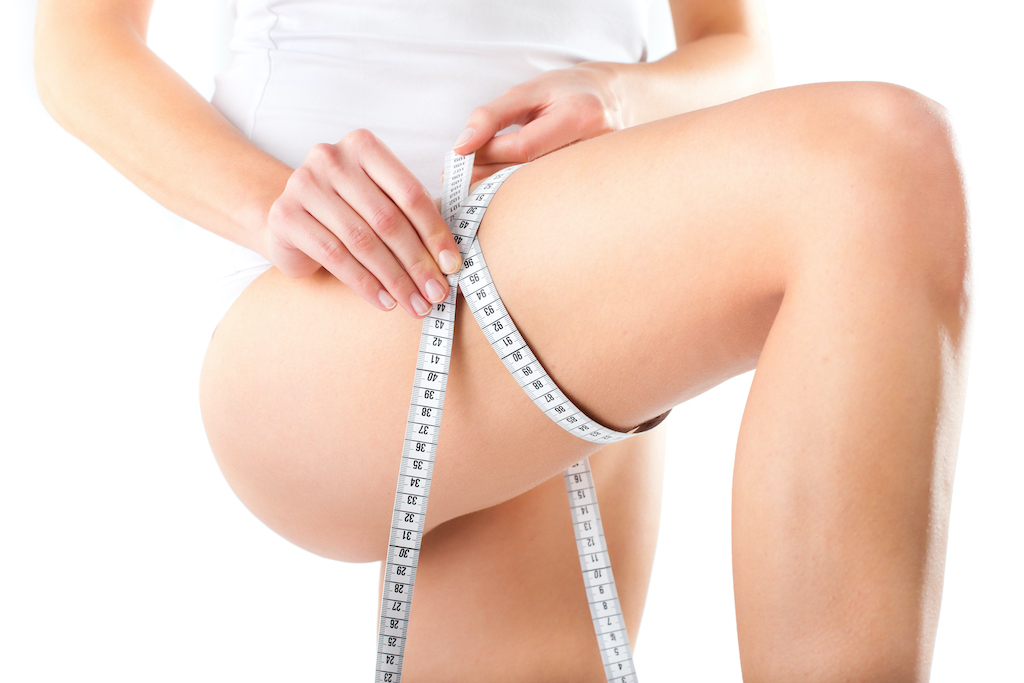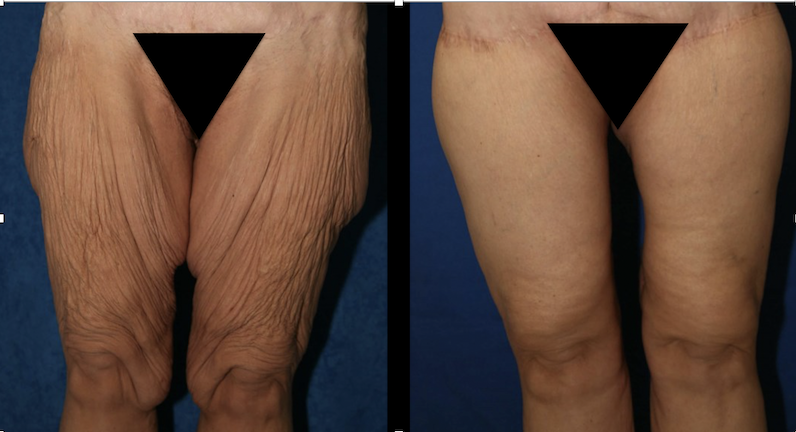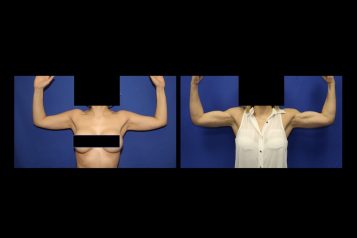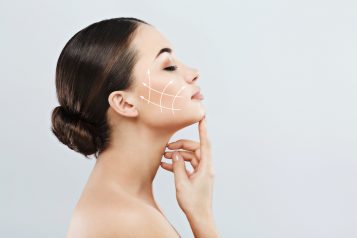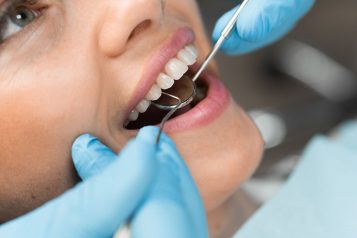Award-winning and board-certified plastic surgeon Dr. J.Timothy Katzen is proud to offer a comprehensive range of aesthetic procedures to women and men at his esteemed facilities in Beverly Hills, CA, and Las Vegas, NV. Having been featured on a number of television programs, such as TLC's The Real Skinny and Discovery Health's The Incredible Shrinking Woman, he has gained recognition for his advanced after weight loss surgery techniques. The most notable of these techniques is his trademark 360 circumferential body lift, which he has performed for numerous patients to help them fully realize their post-weight loss body goals. In addition to weight loss procedures, Dr. Katzen specializes in silicone injection removal, thigh and arm reduction, breast augmentation, breast lift, Vaser High Definition Liposuction, and facelifts. Haute Beauty sits down with Dr. Katzen to discuss how a thigh reduction procedure can boost your self-esteem by removing excess thigh skin and fat.
 Photo Credit: Shutterstock
Photo Credit: Shutterstock
HB: What is a thigh reduction?
A thigh reduction is a plastic surgery procedure designed to reduce the size of your thighs. The medical term for a thigh reduction is called a "thighplasty." A thigh reduction is also called a thigh lift. However, a thigh reduction is much more than just a thigh lift. A thigh lift always involves a thigh reduction. Typically, during a thighplasty, excess thigh skin and fat are removed. Most often, a thigh reduction is accompanied by thigh liposuction.
There are five types of thigh reductions: crescent, modified vertical medial, modified T, full vertical medial, and vertical lateral.
During the crescent thigh reduction, a crescent area of upper, inner thigh skin is removed. The upper incision follows the bottom of a "reasonable" bikini. Through this upper, inner thigh incision, dissection is carried down the inner leg. After the thigh dissection, a crescent area of thigh skin is freed, and a lower, counter incision is made. Then, the crescent area of skin and upper thigh fat is removed. The lower, counter incision border is pulled upward to the upper inner thigh. The wound is then closed in multiple layers with sutures. The crescent thigh reduction's eventual scar is in the groin, where the thigh meets the groin. During a modified vertical medial thigh reduction, an incision is made from the groin partially down the inner thigh. The modified vertical medial thigh reduction incision follows your inseam, like the inseam on a pair of jeans. Typically, during a modified vertical medial thigh reduction, thigh liposuction is also performed. Both the modified vertical medial and the crescent thigh reduction are performed during a modified T thigh reduction. First, a crescent upper thigh incision is made high in the inner groin. Then, the horizontal crescent-shaped upper thigh excess is removed. Second, a vertical incision inner thigh incision is made. Then, the vertical upper thigh skin and fat are removed. The result is a T-shaped incision in the upper inner thigh. During a full vertical medial thighplasty, inner thigh liposuction is performed. Then, an incision is made from the groin to the knee. A large elliptical area of thigh skin and fat is removed from the groin to the knee. The full vertical medial thigh reduction is the most common type of thighplasty. Finally, there is a vertical, lateral thigh lift. During a vertical, lateral thigh reduction, an incision is made from the upper hip, over the outer hip and thigh to the outer portion of the knee. The vertical, lateral thigh lift is the least common type of thigh reduction.
HB: Who is the best candidate for a thigh reduction? Who would not be the best candidate?
The best candidates for a thigh reduction are patients who are motivated and possess realistic expectations. Thigh reductions are designed to eliminate excess thigh skin and fat of the thigh. Thigh reduction patients should be at a stable weight for three months before undergoing thigh reduction. Thigh reductions can reduce thigh skin rashes and the chaffing between the legs during walking or exercise. Also, a successful thigh reduction can make buying clothes easier. Often, a thigh reduction can significantly improve your self-esteem.
Patients who are not good candidates for a thigh reduction include patients who smoke and have uncontrolled diabetes. Unsuitable thigh reduction candidates are patients who are still overweight and need to lose more weight. Thigh reductions are not a weight loss procedure, but rather a thigh contouring procedure. However, some thigh reductions are performed to assist people in exercising and thus, lose more weight.
 Photo Credit: Dr. Timothy KatzenHB: What is the thigh reduction procedure like?
Photo Credit: Dr. Timothy KatzenHB: What is the thigh reduction procedure like?
Thigh reductions are performed under general anesthesia under the guidance of a board-certified anesthesiologist. At the beginning of most thigh reduction surgery, thigh liposuction is performed. During thigh liposuction, thigh fat is permanently removed. Then, excess thigh skin and fat are removed. The amount of excess thigh skin determines the length of the thigh incision. Thigh reductions take approximately 3 to 4 hours to complete depending on individual variations and anatomic complexities. Thigh reductions can be combined with other surgeries like tummy tucks, lower body lifts, and even breast surgeries.
HB: What makes you a stand out plastic surgeon to perform the thigh reduction procedure?
Plastic surgery expertise is achieved by possessing a natural skill set and using that skill set repeatedly to perform a specific plastic surgical procedure. Thus, experience is achieved by performing hundreds of the same procedure. For the past 20 years, my plastic surgery private practice's primary focus has been reconstructive plastic surgery after massive weight loss. I have performed hundreds of thighplasties on deserving patients from all over the world. Over the years, I have become an expert in the filed of thigh reductions.
HB: What is recovery like?
After your thigh reduction, you will awake in the recovery room. You will be monitored for several hours to ensure that the general anesthesia gasses have left your body. Then, you will be transported to a recovery center for further monitoring for about two days. After that, you can return home. You will have a pain pump that drips in a medication called lidocaine. Lidocaine helps to decrease your thigh pain. To accelerate your healing and minimize seromas and hematomas, you will have drains.
Typically, drains stay in place for one to two weeks. You will be expected to wear a lower extremity compression garment for six weeks. Compression garments help to minimize swelling and assist in flattening the thigh reduction scar. If you have a sitting job, plan to take off two weeks from work. If you have an active job that requires walking and climbing stairs, plan to take off three to four weeks from work. You should be able to return to limited activity two weeks after your thigh reduction. You should be able to return to your gym at approximately two months.
Call TODAY at (310) 859 - 7770 to schedule your FREE consultation to achieve the thighs of your dreams. For more information, please visit www.timothykatzemd.com. Follow on Instagram @timothykatzenmd. For your convenience, Dr. Katzen has offices in Beverly Hills, CA, Las Vegas, NV, and Dubai. Physical or virtual consultations can be arranged. Virtual consultation options include FaceTime, Zoom, Skype, and WhatsApp.
For more information, visit Dr. Timothy Katzen's social media:







